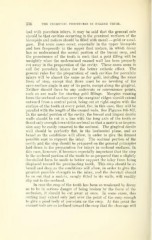Page 678 - My FlipBook
P. 678
336 THE xechnicaij peocedubes in filling teeth.
had with porcelain inlays, it may be said that the general rule
should be that cavities occurring in the proximal surfaces of the
bicuspids and molars should be filled with metal — gold or amal-
gam. But some cases occur, especially in the upper bicuspids
and less frequently in the ui3per first molars, in which decay
has so imdermined the mesial portion of the buccal cusp, and
the prominence of the teeth is such that a gold filling will be
unsightly when the undermined enamel wall has been properly
cut away in the preparation of the cavity. These cases seem to
call for porcelain inlays for the better esthetic effect. The
general rules for the preparation of such cavities for porcelain
inlays will be almost the same as for gold, including the same
form of step, except that there must be no beveling of the
cavo-surface angle in any of its parts, except along the gingival.
Neither should there be any undercuts or convenience points,
such as are made for starting gold fillings. Margins running
from the occlusal sui'face over the marginal ridges should extend
outward from a central point, being cut at right angles with the
surface of the tooth at every point, for, in this ease, they will be
parallel with the length of the enamel rods. See Figures 105-107.
In the mesial portion of the cavity, the buccal and lingual dentin
walls should be cut in a line with the long axis of the tooth or
flared only enough toward the occlusal so that a matrix or impres-
sion may be easily removed to the occlusal. The gingival dentin
wall should be perfectly flat, in the horizontal plane, and as
broad as the conditions will allow, in order to give the firmest
possible seat to support the inlay. The occlusal portion of the
cavity and the step should be prepared on the general principles
laid down in the preparation for inlays in occlusal surfaces. In
this case, however, it becomes especially important that the step
in the occlusal portion of the tooth be so prepared that a slightly
dovetailed form be made to better support the inlay from being
displaced toward the proximating tooth. This step should be as
broad and deep as the conditions will allow, in order to give the
greatest possible strength to the inlay, and the dovetail should
be so cut that a matrix, snugly fitted to its walls, will readily
slip out to the occlusal.
In case the cusp of the tooth has been so weakened by decay
as to be in serious danger of being broken by the force of the
occlusion, it should be cut away at once. In some cases, this
cutting may extend only just over the point of the cusp enough
to give a good body of porcelain on the cusp. At this point the
enamel rods are so inclined toward the cusp that the cleavage will


